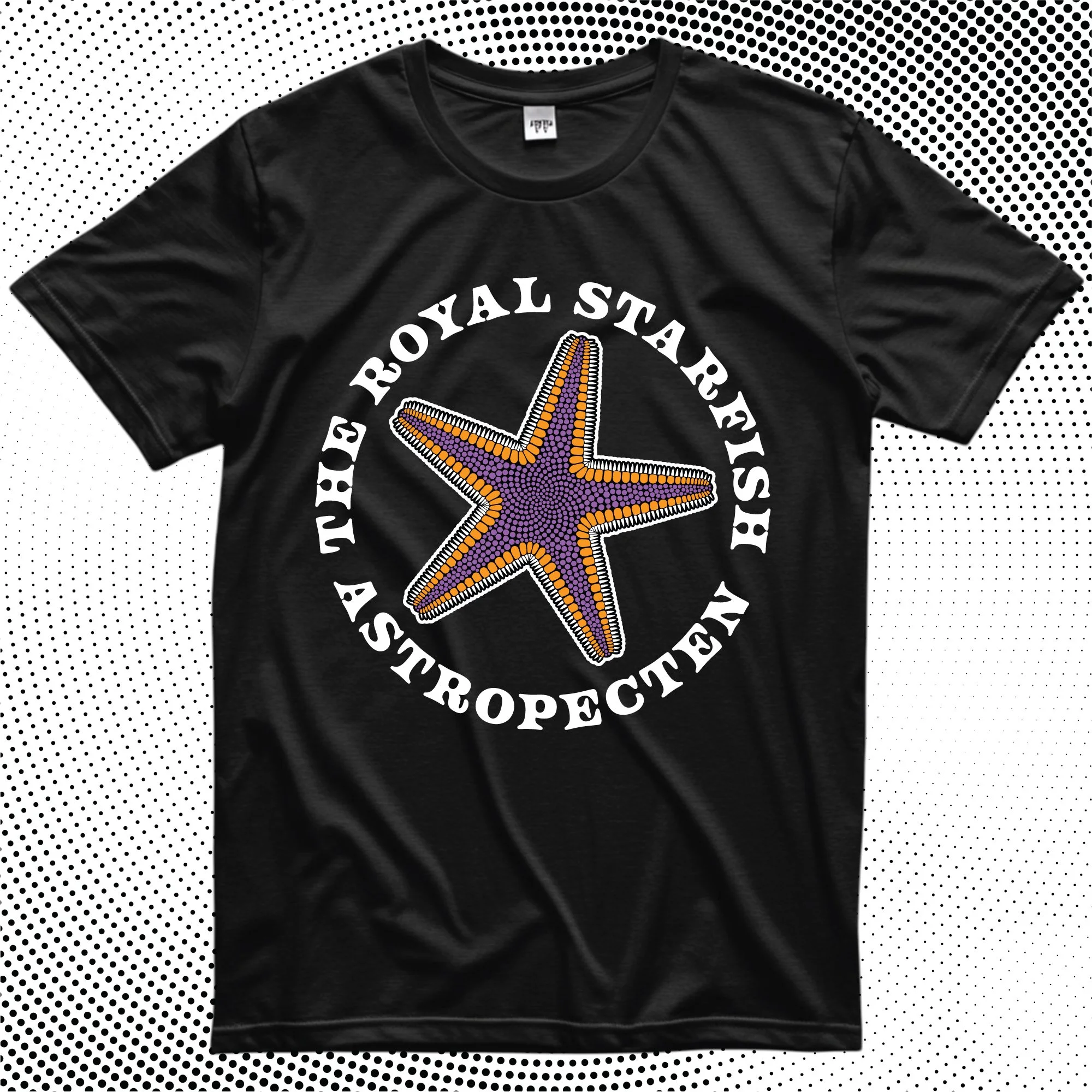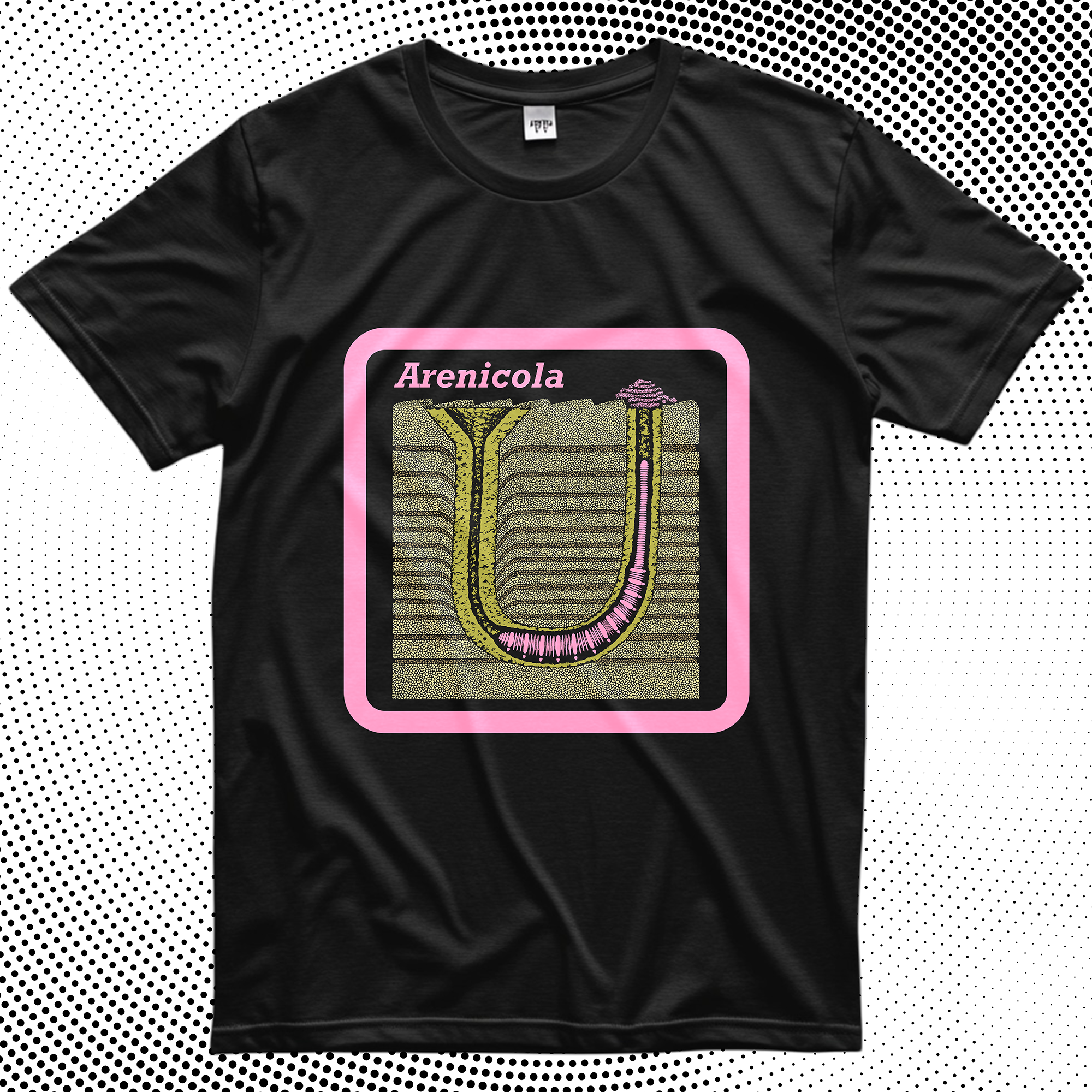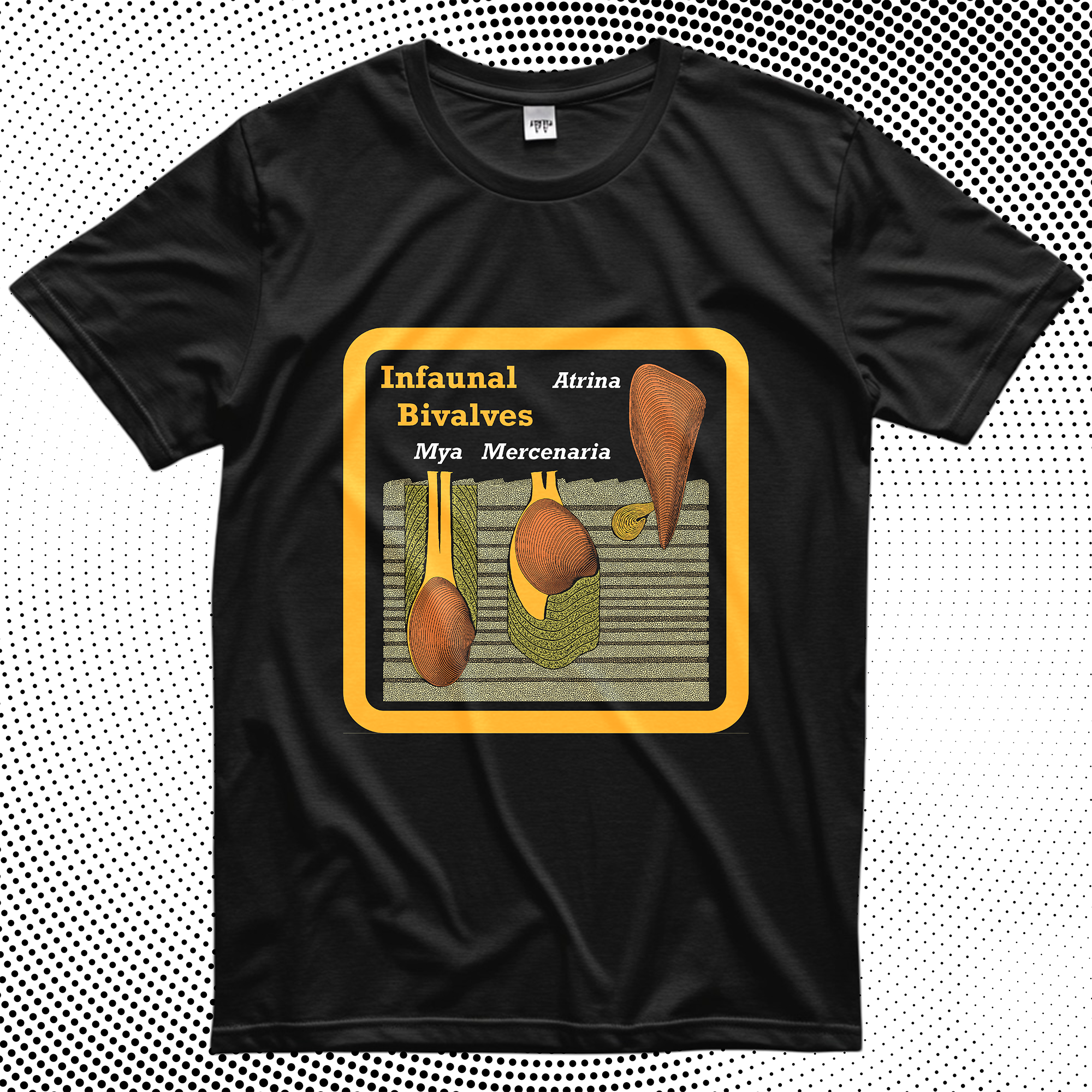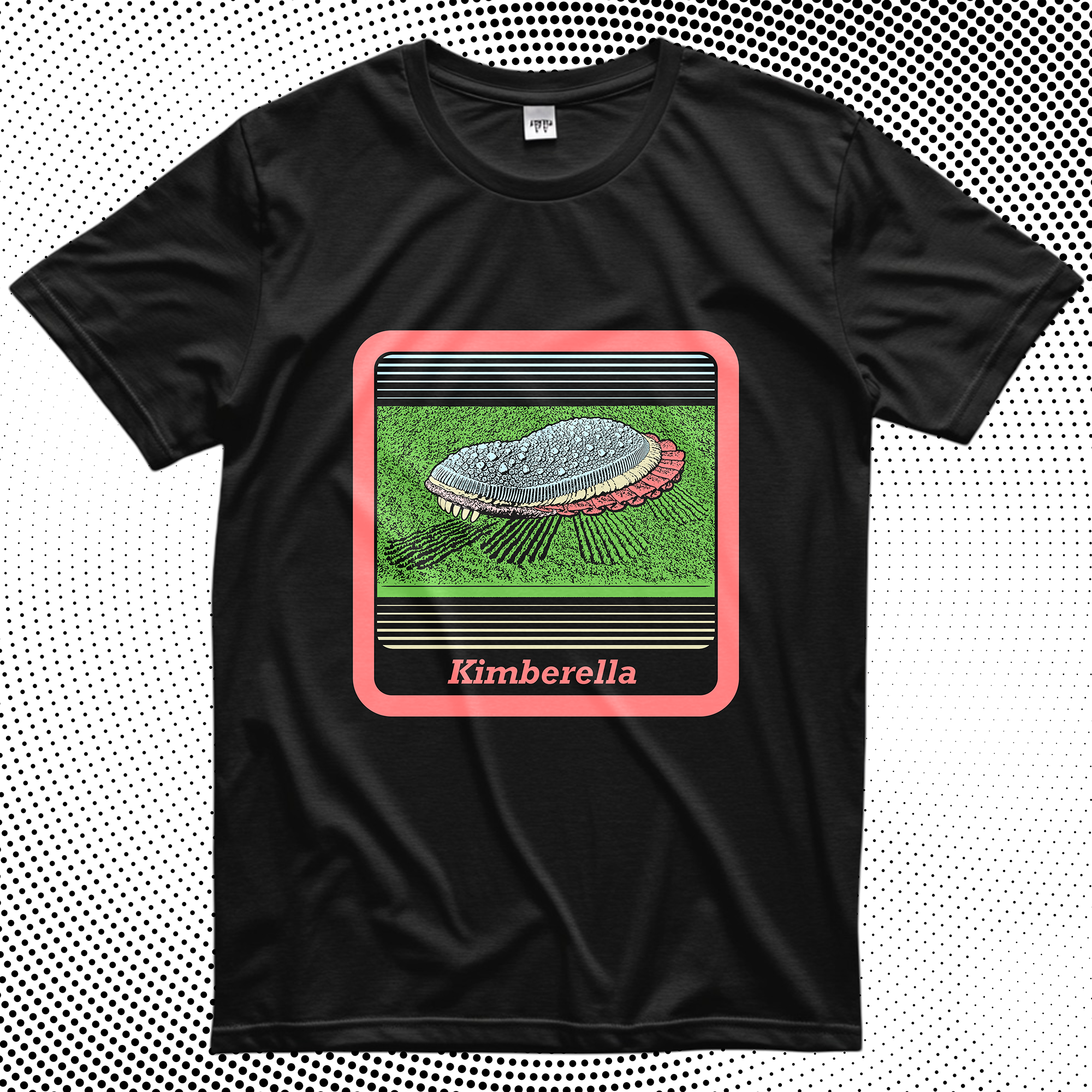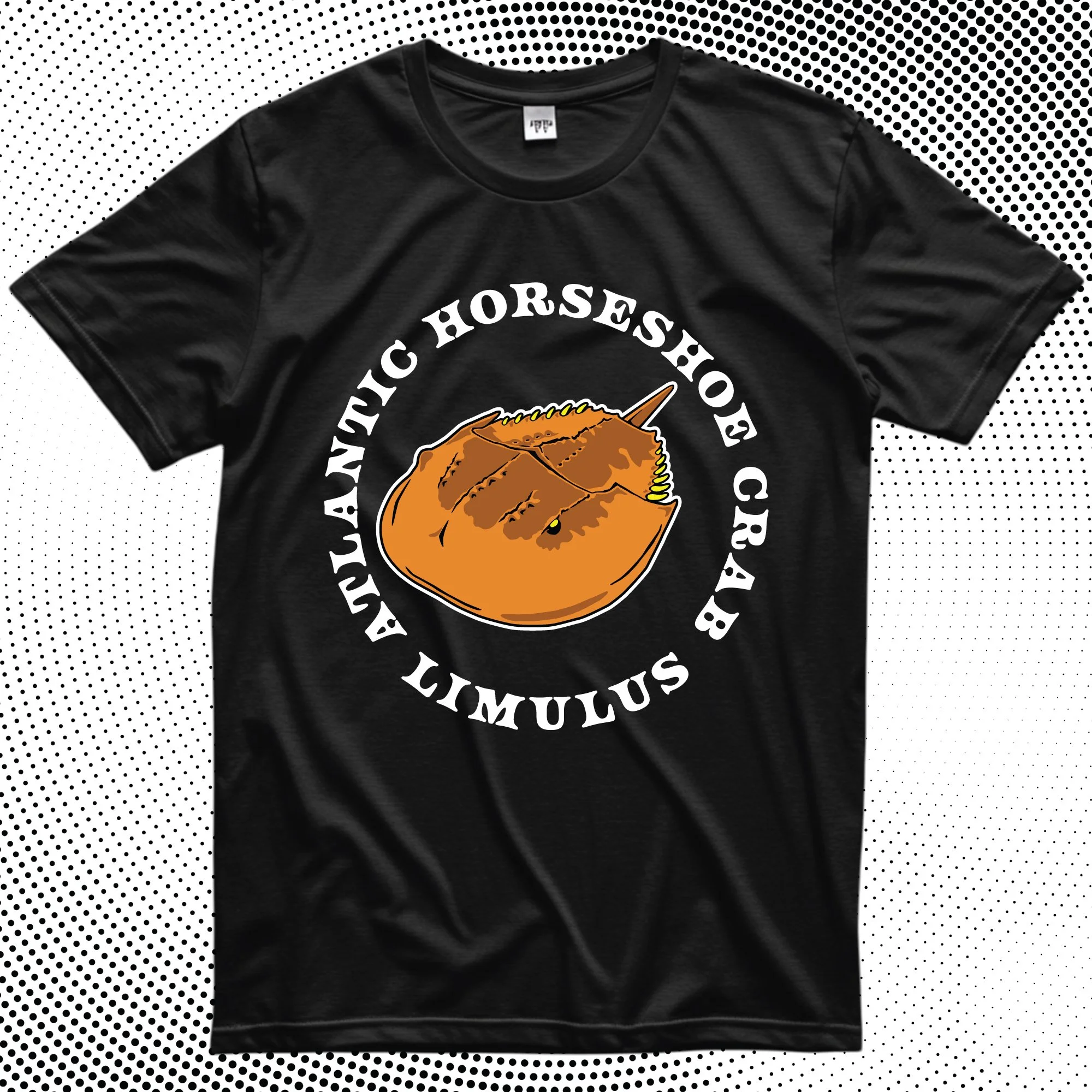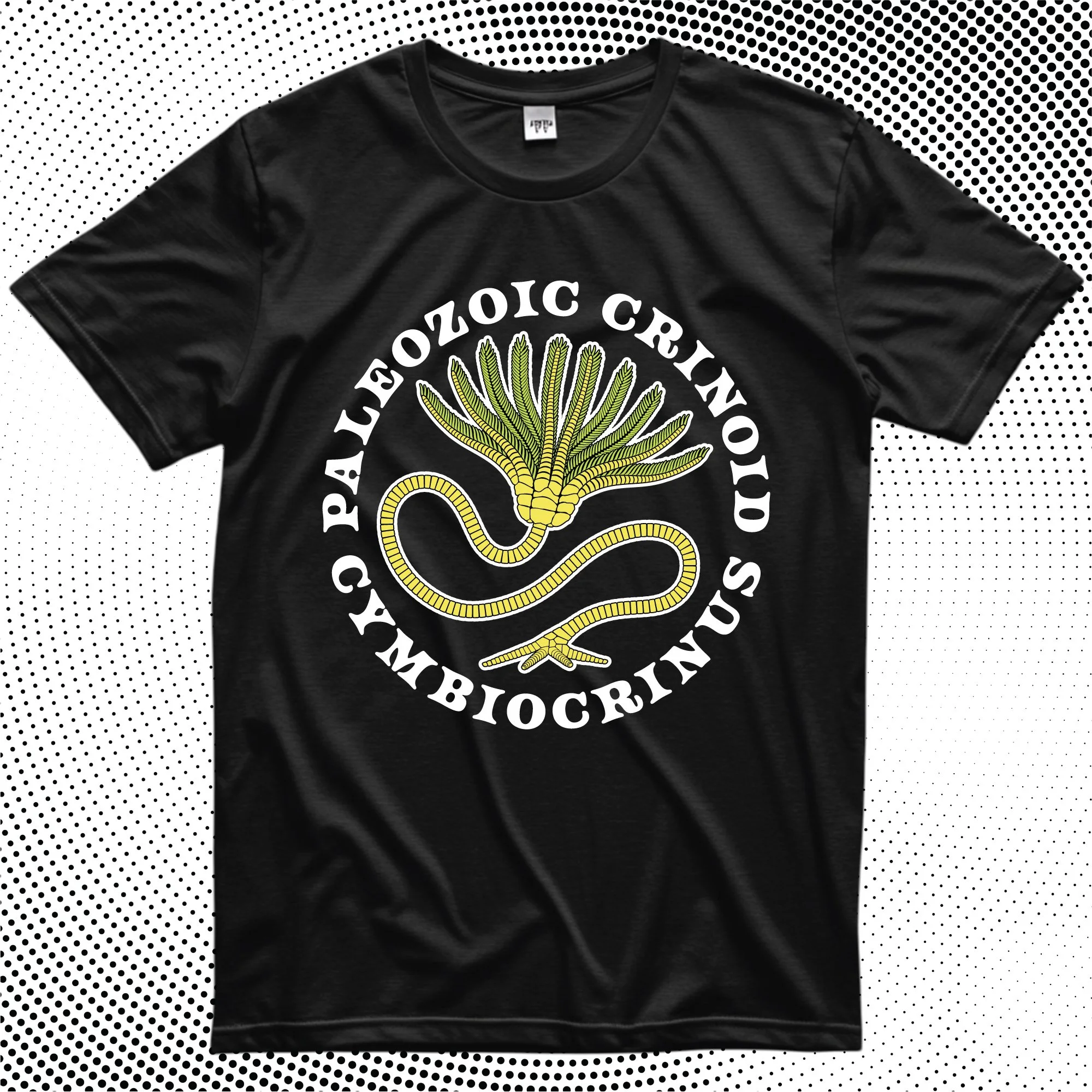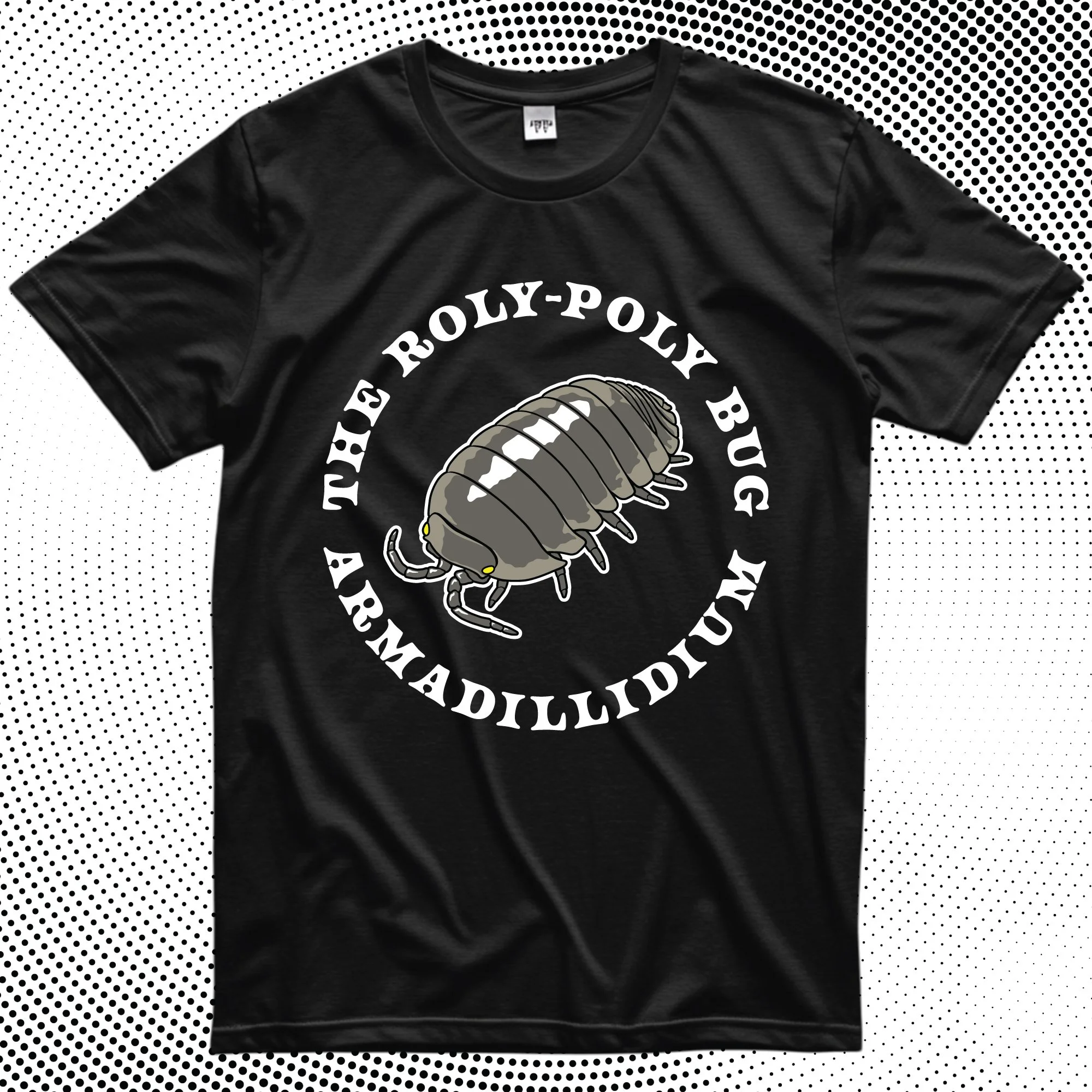
T-shirt designs based on Blender 3D Models
To be clear, these T-shirts do not exist. These examples below are a current exploration into using existing 3D models that have been created in Blender 3D to produce 2D images and designs with a limited color palette. Creating these graphics follows a 2-step process: 1) sketching out shapes of light (color) and shadow (black) in Adobe Photoshop; and 2) tracing the shapes in Adobe Illustrator to create a vector graphic with a white outline. Vector graphics can be scaled without affecting resolution, so these designs can be scaled to sizes large and small without becoming pixelated. This method lends itself to graphic designs on T-shirts, or for stickers, but there are surely other applications as well. The 3D models add a perspective and depth to the images that would not have been easy for me to acquire from pure imagination alone. In any case, they’re fun T-shirts that are surely appropriate for any paleontological conference or outdoor excursion. Thanks for reading! -Scott
T-shirts based on 3D models
These fossil examples below were simply the easiest to begin the process of adapting 2D color images from a 3D model. Also, they’re the fossils that I would be most inclined to want to wear on a T-shirt. I also like the idea of putting lesser known fossils on T-shirts for the same reason I’ve enjoyed making 3D models of them. No one else is likely to take the time to do it. The corresponding 3D models for these graphics can be found on the 3D Printing section of this website.
T-shirts based directly on reference material
Unfortunately, I haven’t created 3D models for all the fossil and modern animals that I would like to see as 2D graphics. So, rather than being based on 3D models, which would have been based on reference anyway, these examples below are based directly on reference material without a 3D model as the intermediary. Clearly, in this method, there is the advantage that I don’t need to create a 3D model to generate a 2D graphic. The downside is that I have far less control over shadows. A 3D model can be lit at any angle to create any composition of light and shadow. With basic reference materials, like photographs, there is much more creative effort required to figure out where shadows should be and to represent them using a limited number of colors.











